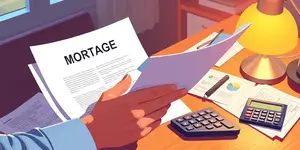
In a world where debt can feel unavoidable, it’s crucial to remember the golden rule: only borrow what you can repay. Recent data reveals that U.S. household debt reached a staggering $18.20 trillion in Q1 2025, with credit card balances topping $1.18 trillion. These numbers underscore the importance of borrowing within your means, not as a restriction, but as a path to true financial freedom.
This article dives deep into the trends, risks, and strategies that empower you to manage debt responsibly, reduce stress, and build a future of stability.
Over the past few years, American debt portfolios have shifted. Mortgages remain the largest component at $12.80 trillion, followed by auto loans at $1.64 trillion. While credit card balances dipped slightly by $29 billion, they still account for $1.18 trillion of household obligations.
High delinquency rates on unsecured debt—up over 3% per quarter between 2021 and 2023—highlight the precarious state many borrowers face. With average credit card interest near 20.42%, a balance of $6,380 paid off at $125 per month can take more than a decade to clear, costing an additional $8,651 in interest.
Borrowing beyond your capacity quickly transforms manageable purchases into long-term burdens. When only minimum payments are made, minimum payments trap borrowers in a cycle where interest compounds faster than balances shrink.
Beyond the numbers, there’s a human toll. Financial insecurity can lead to anxiety, depression, and strained relationships. Poor repayment habits damage credit scores, raising future borrowing costs and limiting opportunities.
Building a plan before you borrow is essential. Start by:
Below is a comparative example illustrating the true cost of only making minimum payments on credit card debt:
This stark contrast shows that paying just the minimum can result in paying more in interest than the original balance itself.
Life is unpredictable. Job losses, medical emergencies, or sudden expenses can derail even the best budgets. That’s why it’s critical to build an emergency fund of at least three to six months’ worth of expenses.
Regularly reviewing and adjusting your plan ensures it stays aligned with your goals. Regularly reassess and adjust financial plans to accommodate changing circumstances and maintain your path toward debt freedom.
The journey away from overwhelming debt starts with small, consistent steps. Paying more than the minimum whenever possible dramatically reduces both principal and interest. Celebrate each milestone, whether it’s paying down a credit card or building your savings cushion.
Financial stress and emotional toll often stem from uncertainty. By taking control through clear goals and disciplined action, you convert fear into confidence. Track your progress, refine your techniques, and stay committed to your objectives.
Remember: borrowing wisely isn’t just about restrictions—it’s about empowerment. With deliberate planning, disciplined repayment, and informed decision-making, you can transform your relationship with debt and step into a future of stability and opportunity.
References













